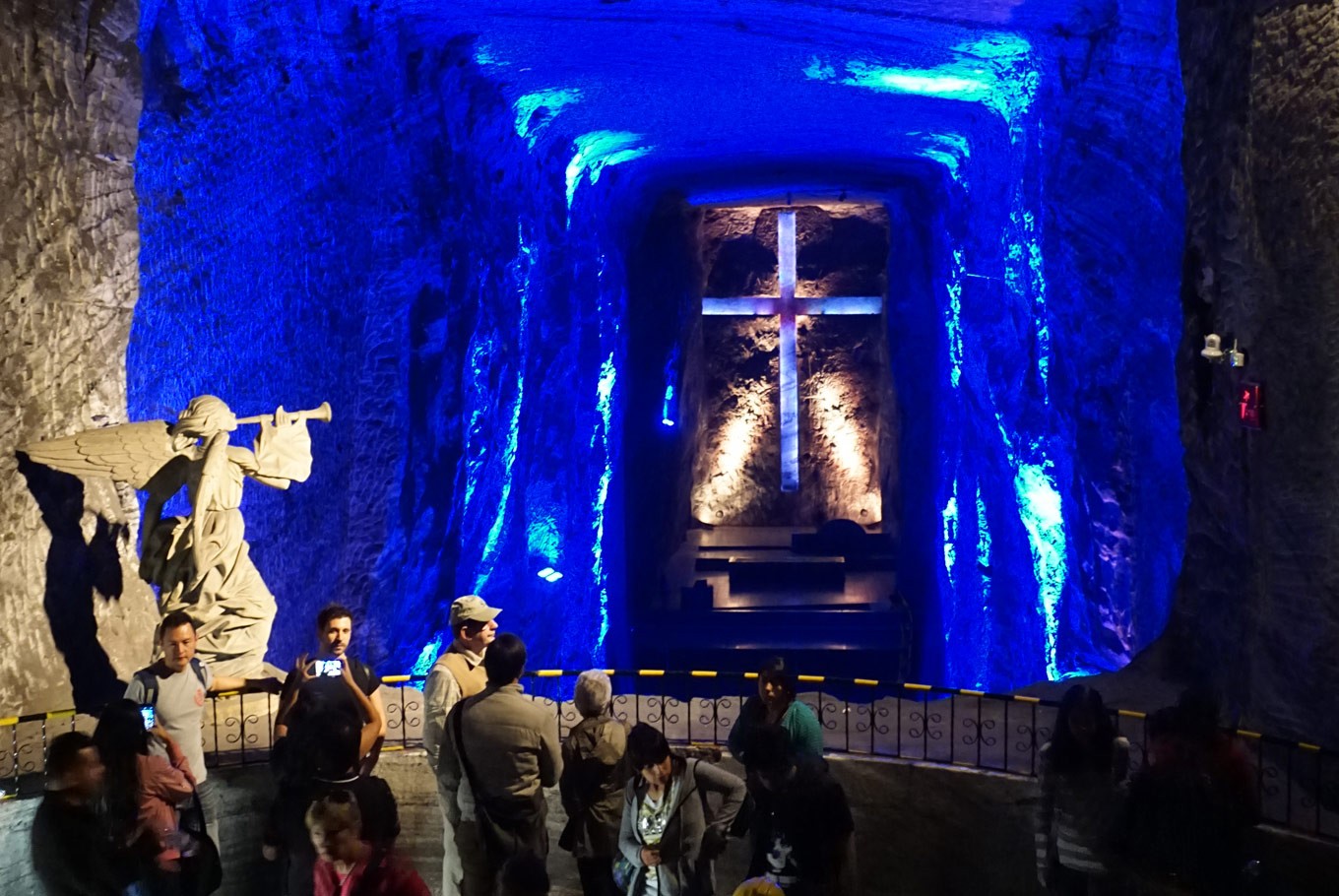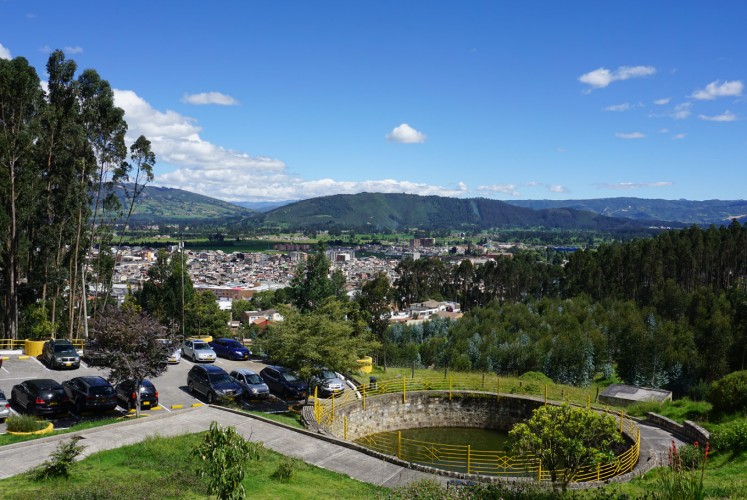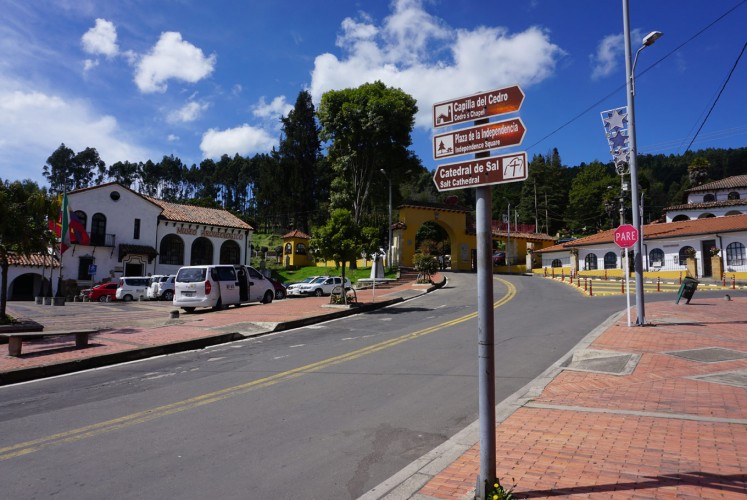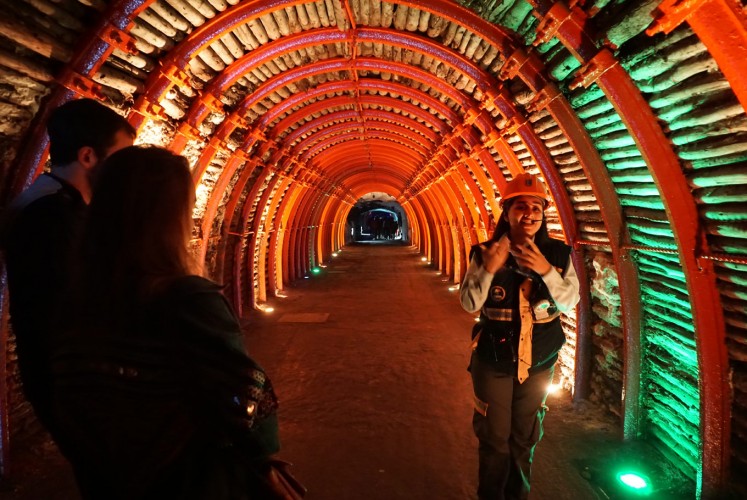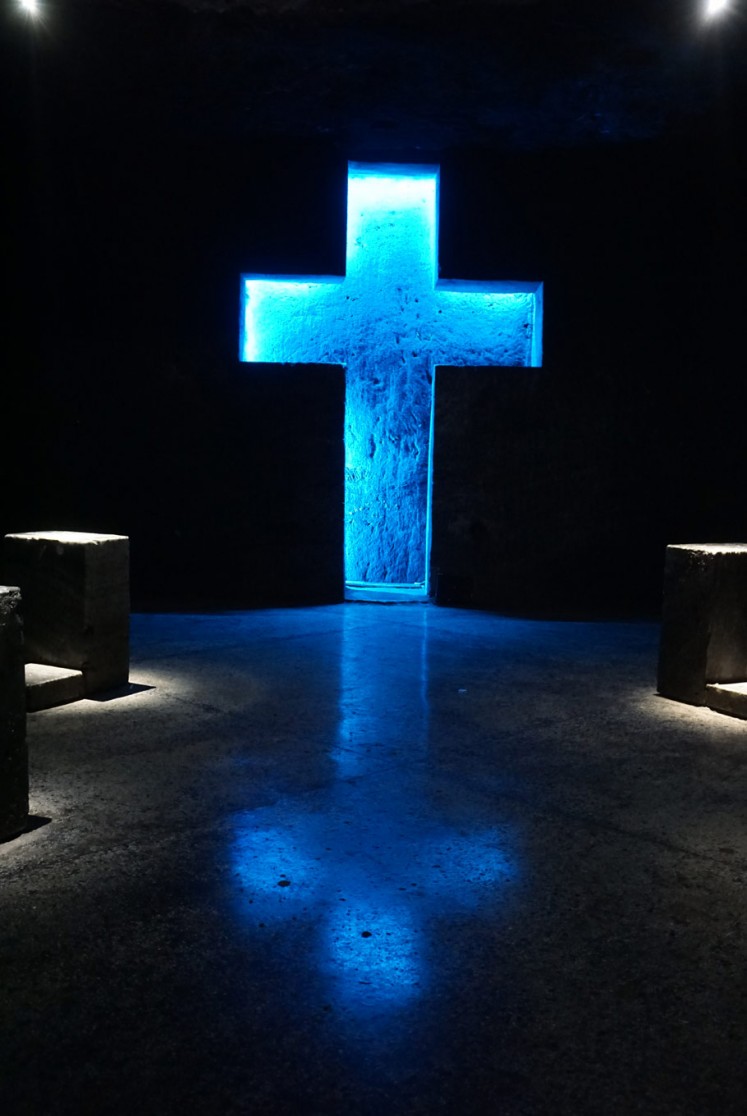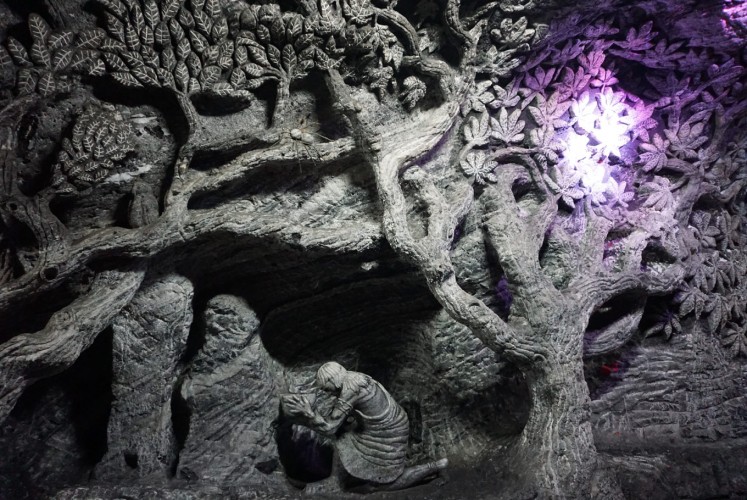Popular Reads
Top Results
Can't find what you're looking for?
View all search resultsPopular Reads
Top Results
Can't find what you're looking for?
View all search resultsSalt Cathedral: Colombian tribute to the mother of miners
Colombia is famous for its aromatic coffee, cartels, Gabriel Garcia Marquez and Shakira, but have you heard of its salty cathedral?
Change text size
Gift Premium Articles
to Anyone
C
olombia is famous for its aromatic coffee, cartels, Gabriel Garcia Marquez and Shakira, but have you heard of its salty cathedral?
The place was called Zipaquirá, a mountain town where Nobel prize winner Gabriel García Márquez finished his secondary studies, only an hour away from Bogotà.
I took a bus from the Portal del Norte terminal in the northern part of the Colombian capital, then stopped in the main avenue of Zipaquirá.
View from Zipaquirá, a mountain town in Colombia. (JP/Florence Nathania)The town was quite still at around 10 in the morning. The only signs of activity came from a few eateries serving typical breakfast food like empanada and arepa, South American pancakes made of white corn masa. I walked along a gently ascending path as the map indicated. This journey led me to the site that had piqued my curiosity, the Salt Cathedral of Zipaquirá.
It was a 10-minute walk to reach the gate leading to the church area. I treasured the mild sun, fresh breeze and green scenery, which instantly reminded me of rural Switzerland. There were white-lined rock stairs flanked by a garden and a rusty signpost saying “here is where the salt road starts” in Spanish. From there on, I just needed to follow the white lines to get to the church.
Salt Cathedral this way. (JP/Florence Nathania)An officer directed me to the ticket office. There were five different types of ticket available for foreigners to enjoy the various attractions on the site, ranging from US$17 to $20. I bought the basic one, which included a guided tour and a 3D movie screening. The most complete package included entrance to the Brine Museum and the Miner’s Route.
A statue near the ticket office told visitors that the Salt Cathedral of Zipaquirá was the first wonder to be acknowledged by the Government of Colombia. In 1816, four underground tunnels were constructed for mining purposes, and up until 1950 the salt mine was adorned with religious images to meet the workers’ spiritual needs. This cathedral was a tribute to the Lady of Rosary, the mother of miners.
Guide explaining some rules for entering the Salt Cathedral. (JP/Florence Nathania)We entered in a group of 20 led by an English tour guide. No one was allowed to go in unaccompanied since there were some restricted areas, and the path may be confusing for first-timers.
The first tunnel we passed through was converted into the way of the cross by Bogotan architect Roswell Garavito Pearl who won a competition to build the new Cathedral in 1991. Four years later, the Salt Cathedral had been furnished with a new dome and three new chambers, known as the ship of birth, the ship of life and the ship of death and resurrection. The ship of life or the central nave contained the world’s largest underground cross that stretched for 16 meters high and 10 meters long.
One of the tunnels in the Salt Cathedral is the Way of the Cross. (JP/Florence Nathania)The guided tour ended in the commercial area, where visitors were allowed to freely explore and spend as long as they wanted to. I started my free time by going to an emerald tunnel in which there was an explanation of the Colombian precious stone extraction process. At the end of the tunnel was a gallery of Colombian traditional houses along with the furniture and utensils.
Another exit from the gallery led to the main tunnel where there were various shops. One sold jewelry, one had bathroom and beauty products, another had souvenirs - I felt like I was window-shopping in an underground mall.
From this main commercial tunnel, there was an entrance to an auditorium that projected a 15-minute 3D animated video about the salt dome, the life of the first inhabitants of the area and how the new civilization finally developed this dome.
As a backpacker, 20 dollars may seem like a lot for entrance to an attraction. Nevertheless, I was satisfied because the experience surpassed my expectations. It was well worth handing over the green bill for the well-organized tour, the artistic murals and carvings combined with their illumination effects, and above all, the unique and enriching spiritual and intellectual experience itself.
I left the place saltier and happier.
***
Florence Nathania is a communication study graduate who has been contributing to The Jakarta Post since 2011. The UK-certified musical theater performer actively promotes Indonesian culture abroad while immersing herself in the local culture. Visit her story at florencenathania.blogspot.
---------------
Interested in writing for thejakartapost.com? We are looking for information and opinions from experts in a variety of fields or others with appropriate writing skills. The content must be original on the following topics: lifestyle (beauty, fashion, food), entertainment, science & technology, health, parenting, social media, and sports. Send your piece to community@jakpost.com. Click here for more information.

